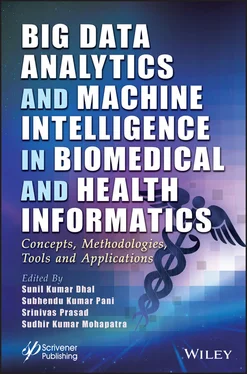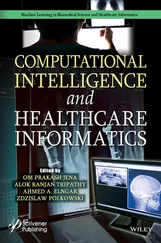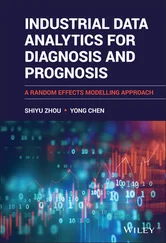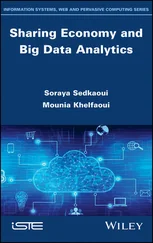Insurance Information Technologies (IIT) have another significant benefit for customers. Not only are they utilized for introducing standard under writing, pricing, but they are also utilized for risk assessment. Better visibility means customers can view the information used in every decision, fostering data driven decisions. This allows companies to conduct in-based thinking in all aspects of their organization, which increases customers’ comprehension of the thought behind every decision.
Many insurance companies are researching incentives that would reward customers for utilizing and contributing to the health data generated by IoT (Internet of Things) devices. There are various potential approaches for better treatment compliance and more substantially compliant customers who use IoT devices. They could offer these services in exchange for their measured activity, which is something they have control over. This will also assist insurance companies, as they work to reduce their liability claims. As with the devices that collect data from the Internet of Things, this type may also handle claims for insurance companies, as it is feasible that they can prove payment claims for the insurance firms’ involvement.
1.5.7.2 IoT for Physicians
Instead of relying on health-measuring wearables and health-monitoring wearables are used, both, for more accurate recording of the patient’s health. Commercially available recordable clinical interventions can identify whether the patient is meeting their treatment goals as well as identify when they are receiving care. This expanded role for healthcare workers in healthcare delivery provides the potential for new patterns of interactions with patients because of the IoT. The collected data from the devices assists healthcare professionals in formulating suggestions for their patients and leads to outcomes that can be anticipated.
1.5.7.3 IoT for Hospitals
Many patients in the healthcare facilities will benefit from IoT, but there are also many things that will be more intricately tracked, such as wellness and medical issues, which can be effectively maintained with IoT implementation. It is One Instrument/Remotely-transitioning devices, like wheelchairs, nebulizers, and blood sensors that are useful for locating these kinds of equipment on the one time scale, as they can be monitored and tracked real time, time with sensors such as the Sensor Modules. Doctors, patients, sensors, and access to state-of-the-art equipment technology such as X-ray imaging can get quick, accurate results, regardless of their distance from one another.
Patients should be aware of the potential infection spread because it is significant. Useful in providing a hygienic (safe) patient monitoring devices or associated with a hygienic (prophylactic) hygiene reduces infection. Asset items such as smartphones and environmental control are frequently used for things like checking temperatures and humidity levels, for instance, for example
How the Internet of Things has helped the elderly stay in control of their health conditions 24/7 and has changed their lives. Most importantly, it affects people’s lives, including those who are single, as well as their families. If a patient is discharged from the hospital or goes home, an alert is issued to their family and concerned healthcare providers so they can be located and admitted in case they require attention.
Fitness bands and other wirelessly connected devices like BP cuffs, blood pressure, as well as glucose sensors allow patients to monitor their condition and keep up with their personal health better-being via apps on their phones or other devices. These devices are designed to count calories, keep track of physical activity, measure your blood pressure, and perform several other functions; they can be adjusted to remember everything.
1.5.8 Improved Supply Chain Management
Patients will not receive the proper care, if the supply of medical institutions is weakened or destroyed. In addition, hospitals’ financing will also become unstable, as well as other aspects of their operations, such as treatment and long-term care. Next area of exploration is in the realm of big data in healthcare which involves the value of analytics to keep the supply chain efficient and fluent from beginning to end.
By using analytics tools to track supply chain metrics and making data driven decisions, they can save the hospitals $10 million a year. Descriptive and Predictive Analytics methods may assist in both formulating pricing and curbing the range of possible variations in product, as well as optimizing the ordering procedures. By expanding in the long term, this way, institutions are able to handle numerous snags and glitches that could lead to long wait times or failure for the patient population, while still helping to ensure their survival.
1.5.9 Developing New Therapies and Innovations
More importantly, the last example is a call to action in healthcare analytics is to reach beyond our current limitations in healthcare to make the world a better place. It has the ability to help research and development of new therapies and medicinal treatments through powerful data analysis of health records. Using a combination of historical, real-time, and predictive metrics with a more unified visualization of data. Using healthcare processes and visual analytics techniques, these healthcare experts can provide an enhanced vision of emerging strengths and weaknesses before running any more complex experiments.
Furthermore, the new genetic and biomedical technologies can allow us to discover new drug therapies and assist in responding to medical emergencies as they arise, which is how the data can make these expansive big data analyses essential. These three aspects of data analytics have the ability to unclog, innovate, streamline, and protect lives. Confidence and clarity are both given to someone when they know the route ahead of time, before the journey begins.
1.6 Challenges in Big Data Analytics
Some difficult issues should be considered when collecting large amounts of data. The cost of experimental measurements is a factor in obtaining high throughput ‘omics’ data. Prior to integrating these heterogeneous data and employing data mining methods, it is necessary to consider the heterogeneity of the data sources, the noise in the experimental ‘omics’ data, and the variety of experimental techniques, environmental conditions, and biological nature. On these heterogeneous biomedical data sets, various data mining techniques can be applied, including anomaly detection, clustering, classification, association rules, as well as summarization and visualization of those large data sets.
These flaws may result in the unreliability of individual data points, such as missing values or outliers. Despite these limitations of ‘omics’ data, EHRs data are heavily influenced by the staff who entered the patient’s data, which can result in the entry of missing values or incorrect data due to human error, misunderstanding, or incorrect interpretation of the original data [20]. Integrating data from disparate databases and standardizing laboratory protocols and values continue to be difficult issues [21].
The high dimensionality of the ‘omics’ data means that it contains many more dimensions or features than the number of samples, whereas the EHRs data, which contains information about individuals/patients, makes data mining techniques more difficult to apply.
The following stage is data pre-processing, which typically entails dealing with noisy data, outliers, missing values, as well as data transformation and normalization. This data pre-processing enables the application of statistical techniques and data mining methods, thereby improving the quality and outcomes of big data analytics and potentially resulting in the discovery of novel knowledge. This novel knowledge obtained through the integration of ‘omics’ and EHRs data should result in enhanced healthcare delivery to patients as well as advanced decision-making by healthcare policymakers.
Читать дальше












